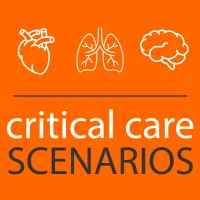View Transcript
Episode Description
We discuss the evidence and practicalities of spontaneous breathing trials and ventilator weaning with Martin Tobin, pulmonologist and intensivist, author of seven textbooks including “Principles and Practice of Mechanical Ventilation,” researcher, and pioneer of the entire concept of SBT as well as the RSBI (or “Tobin index”).
Learn more at the Intensive Care Academy!
References
* Extubation and the Myth of “Minimal Ventilator Settings”
* Why Physiology Is Critical to the Practice of Medicine: A 40-year Personal Perspective
Takeaway lessons
In Dr. Tobin’s opinion…
* The common practice of pressure support trials on 5/5 cm H2O is unwise, because it’s too easy; even these “modest” amounts of support are much more than they will have after extubation, decreasing work of breathing by ~40%.
* The idea that pressure support helps negate the resistance of the endotracheal tube is also erroneous; in the typical patient with a typical airway, the diameter of the native airway after extubation, and hence the work of breathing, will roughly approximate that of breathing through the ET tube (due to edema, etc). In other words, don’t try to negate that resistance; it will still be present later.
* For Dr. Tobin, the sensible alternatives are T-piece or blow-by oxygen, or a 0/0 trial. He likes T-piece as it’s highly controllable for research, but those who prefer the patient to be attached to the ventilator can certainly do 0/0. (Note that no modern ventilator actually drops to zero pressure, usually offering about 1 cmH2O of support, but this is negligible.)
* Each additional day on the ventilator increases the risk of VAP by about 1% and VAP has a mortality of about 70%. Getting off the vent ASAP is a vital goal.
* Dr. Tobin thinks the idea of physiologic PEEP occurring in patients breathing on their own, including the obese, is a fallacy; once extubated, no PEEP is present.
* There is no advantage in an SBT beyond 30 minutes; 30 will answer the question.
* Respiratory muscle fatigue occurs in the vast majority of ICU patients, including after SBT; it has not been shown in fatigue studies using twitch stimulation of the phrenic nerve and similar work. If it does occur, it takes about 24 hours to recover.
* The best marker of success on SBT is probably using esophageal manometry to assess work of breathing using the transpulmonary pressure. Short of this, look for clinical findings of work of breathing by visualization and palpation: any phasic contraction in the sternomastoids, phasic movement in the thyroid cartilage, and phasic recession in the intercostals/suprasternal fossa/supraclavicular spaces. Oxygenation is obvious from oximetry, and ventilation only needs to be queried if you have a concern about hypercarbia.
* There is no role for the RSBI in evaluating SBT success. This tool was derived by Dr. Tobin as a screening tool for SBT readiness, i.e. a protocolized way to push clinicians to perform SBT earlier than they otherwise might by judgment alone. Patients should be screened by briefly placing them on 0/0 or T-piece, waiting about 1 minute to normalize breathing, then monitoring the RSBI for 1 minute. If <105,
